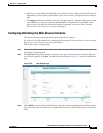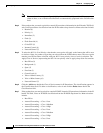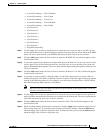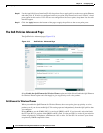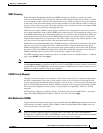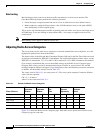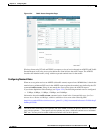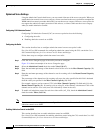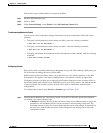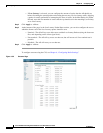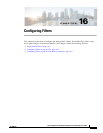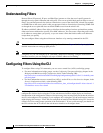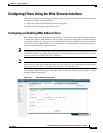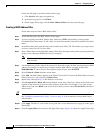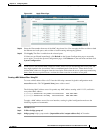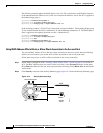
15-15
Cisco IOS Software Configuration Guide for Cisco Aironet Access Points
OL-30644-01
Chapter 15 Configuring QoS
Configuring QoS
Follow these steps to enable admission control on an SSID:
Step 1 Open the SSID Manager page.
Step 2 Select an SSID.
Step 3 Under General Settings, select Enable in the Call Admission Control field.
Troubleshooting Admission Control
You can use two CLI commands to display information to help you troubleshoot admission control
problems:
• To display current admission control settings on radio 0, enter the following command:
# show dot11 cac int dot11Radio 0
• To display current admission control settings on radio 1, enter the following command:
# show dot11 cac int dot11Radio 1
• To display information about admitted streams with admission control and MT, enter the following
command:
# show dot11 traffic-streams
Configuring Streams
QoS policies mark or remark packets that go through the access point. When defining a QoS policy, you
can also decide on limiting the rate of certain traffic.
QoS Elements for Wireless phones allows you to prioritize any voice packet regardless of any other
consideration. This applies a low latency configuration to voice packets, without any upper limit.
Configuring streams is the third way of applying prioritization techniques to time-sensitive traffic, by
determining which traffic should be sent with higher priority (low latency queue), and limit the amount
of retries for these time-sensitive packets. Streams can be used in combination with other QoS
configurations.
To configure these features, go to Services > Streams page (see Figure 15-5).
Step 1 From the Packet Handling per User Priority section, select the User Priorities queues that should be
served with a low latency queuing logic.
–
If Reliable is selected, unicasts packets are resent, if they are not acknowledged, as long as the
destination is still reachable (wireless client associated or wireless bridge connected). The
maximum amount of retries for a unicast packet that has not be acknowledged is determined at
the radio level, with the Max data retries value configured in the Settings tab of each radio
configuration section.



